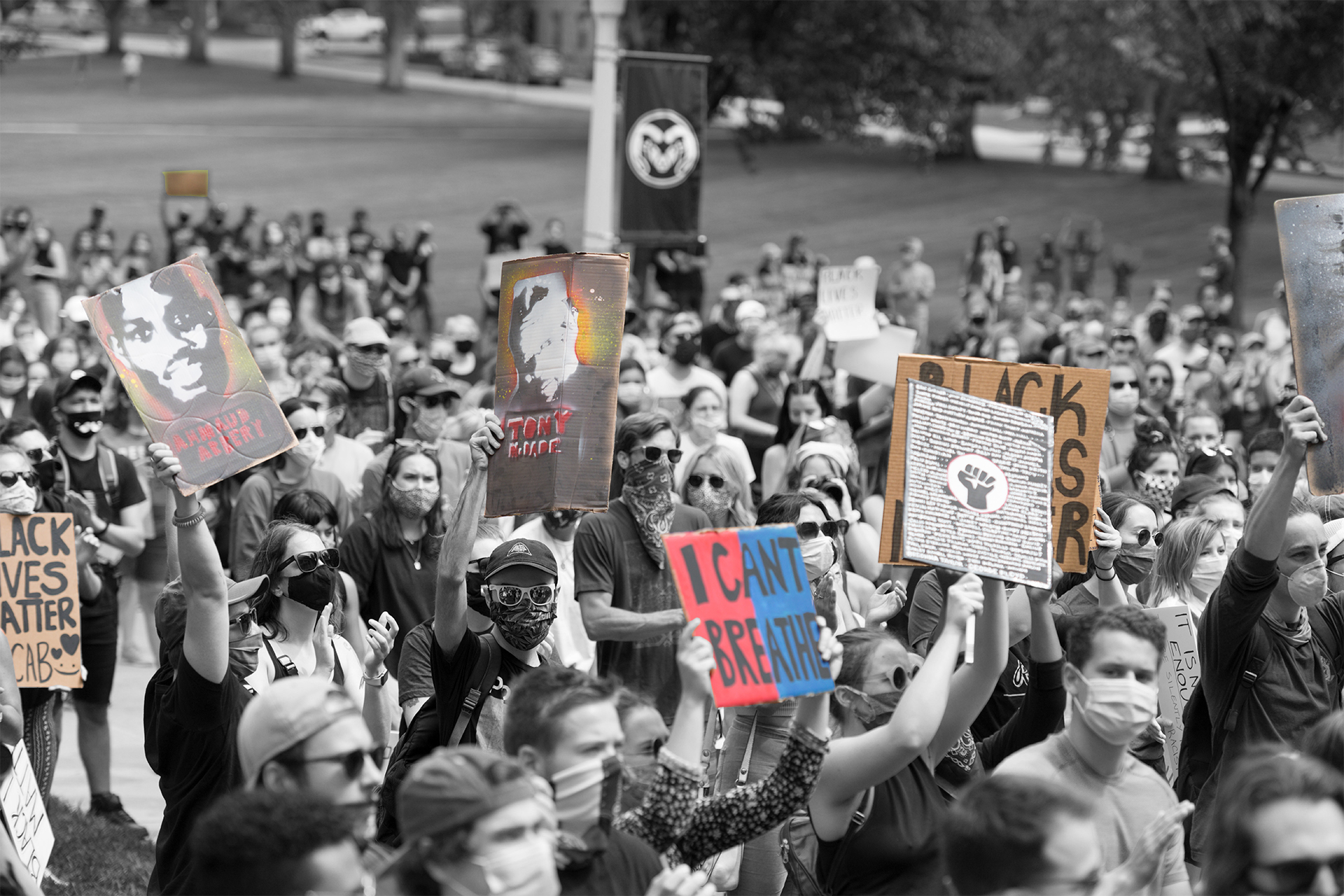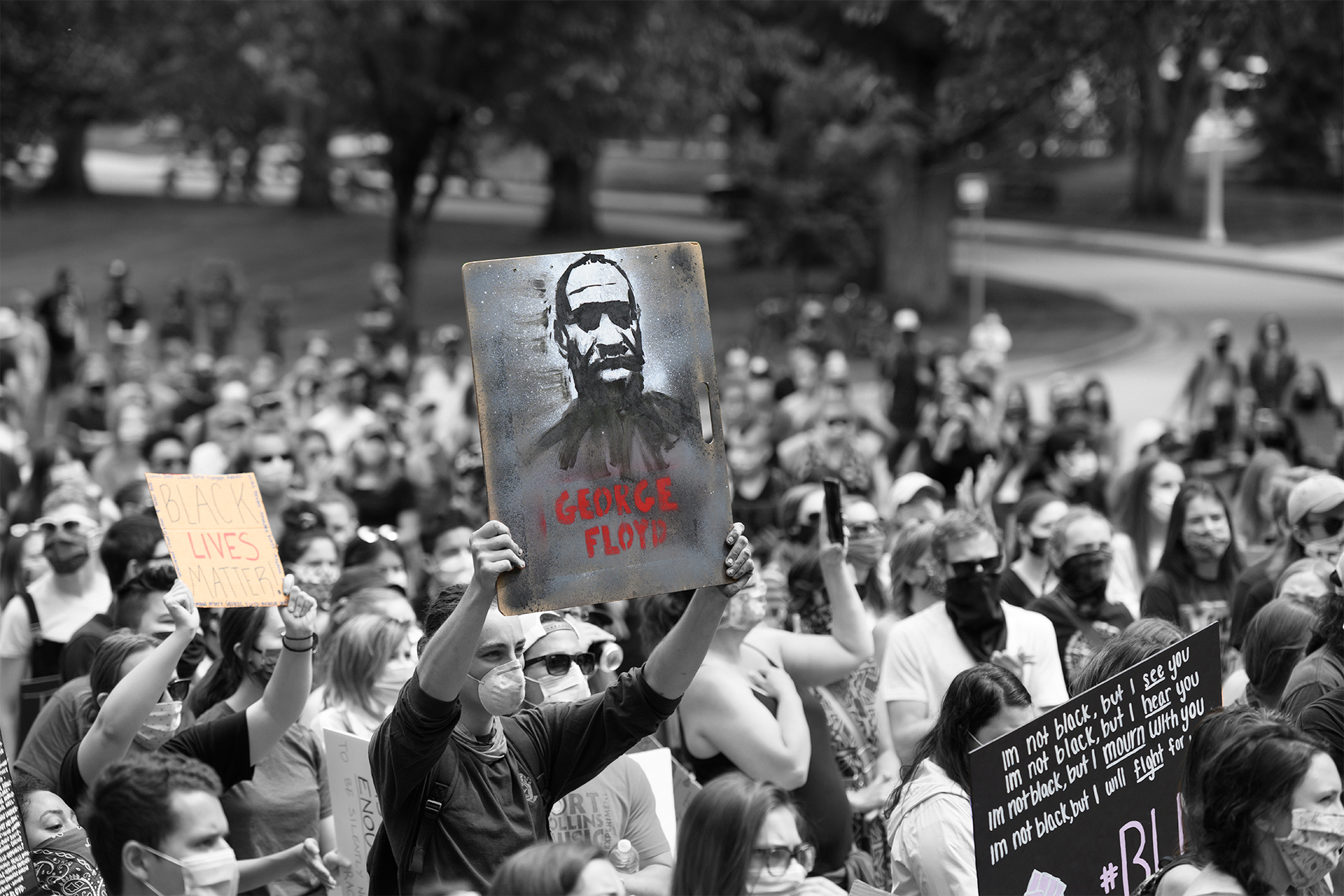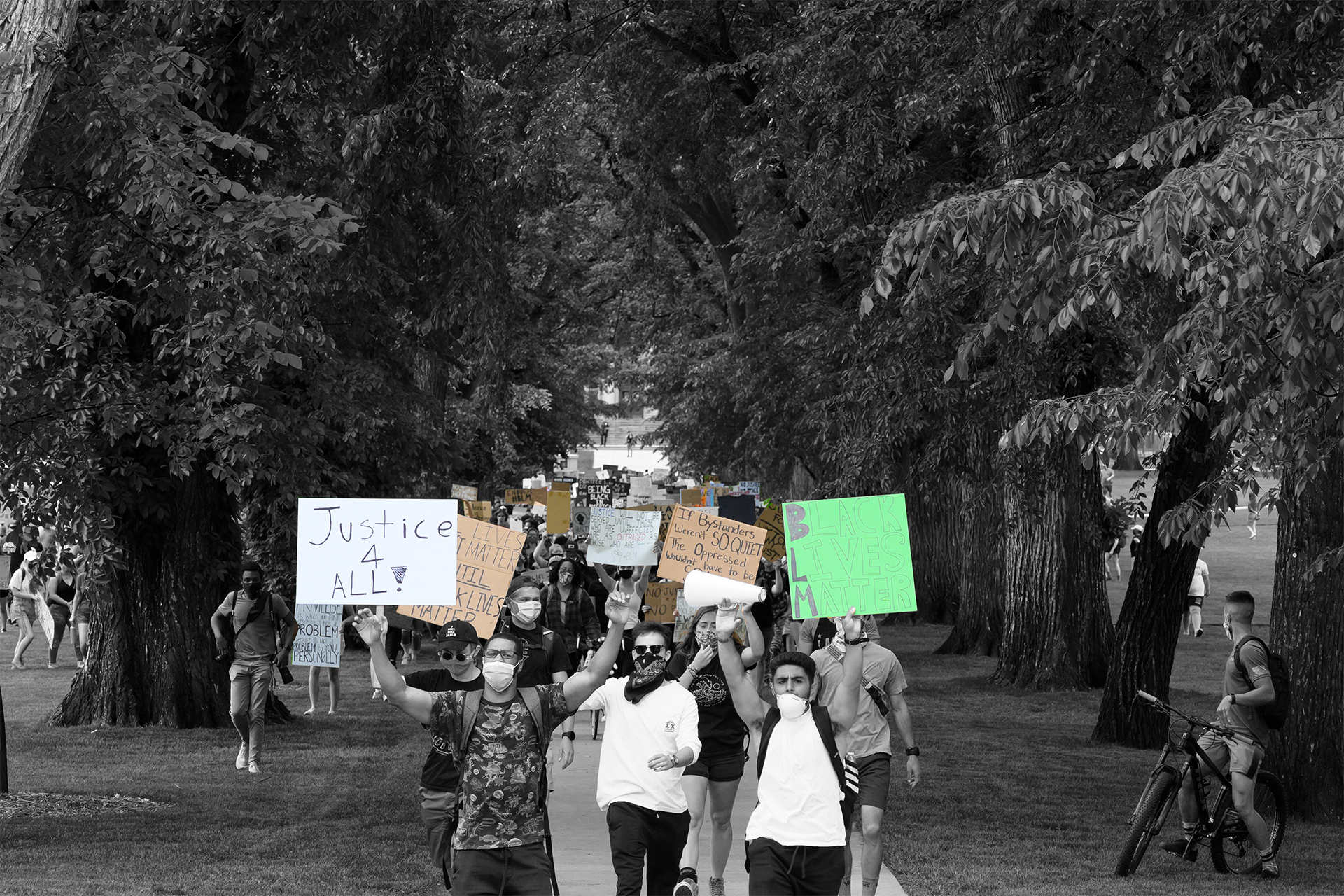Activism in the era of COVID-19
CSU faculty weigh in on how the practices of activism have been altered during the pandemic, what changes might be here to stay, and how to get involved responsibly by Katie Courage published Sept. 29, 2020Although there have been many mass demonstrations across the country, by and large, the COVID-19 pandemic has radically altered many aspects of civic engagement in 2020: political conventions gone virtual, long-planned demonstrations canceled, communities of activists championing a variety of issues coming together through online platforms.
“We’re living through historic times,” said Dominik Stecula, an assistant professor in the Department of Political Science in the College of Liberal Arts at Colorado State University, who studies the intersection of media communication and behavior.
Before the COVID-19 pandemic, activism took many forms, often involving large demonstrations, door-to-door canvassing, or asking strangers for signatures on petitions. But the arrival of the novel virus has shifted a lot of these traditional practices away from in-person contact. “The pandemic changed a lot about how activism is practiced,” Stecula said.
Although the virus has shifted the landscape of engagement, it hasn’t dampened enthusiasm around it. And this year, despite of – or perhaps even because of – the pandemic, more people than ever seem to be paying attention and even getting involved.
“I think it’s changed most significantly in terms of its grander visibility,” said Doreen Martinez, an associate professor in the Department of Ethnic Studies, whose research includes sociopolitical environment issues and visual culture. “I think that the general populace has become much more aware of activism, whether that’s through news media or social media. Currently, activism has a feel and an energy to it that is new to a lot of people, where it rallies people.”
And right now, there is no shortage of issues to rally around. “I certainly feel there is a greater sense of urgency now than in the recent past, whether the issue is racial justice, public health, financial insecurity, or climate change,” said Eric Ishiwata, an associate professor of ethnic studies who researches race relations.
Changing engagement

Activism has been a part of the United States since its founding. Since then, the causes and practices have been evolving and expanding, bringing with them echoes of the past.
“These current movements are built upon foundations that were created through the tireless work of largely unsung heroes,” Ishiwata said. “This summer’s nationwide demonstrations surrounding racial justice, for example, looked markedly different than Ferguson (Missouri) in 2014. The pandemic is at least part of this equation.”
Part of what has changed this year is many people’s awareness of activism.
“It was here in a significant way even before the pandemic,” Martinez said. “For people who have had less exposure to activism, the heightened visibility of it seems really big and really different.”
It might seem hard to remember now, with so many dramatic events in 2020 – from protests in support of the Black Lives Matter movement to election year political demonstrations – but in recent years, there has also been major, public activism around the environment, economic inequality, undocumented students, and abortion and gun rights. For example, the 2019 climate strike drew some 6 million people – many of them young – out to protest the climate crisis. And hundreds of CSU students demonstrated against racial bias during President McConnell’s first Fall Address last year.
“It’s always been there,” Martinez said. “The pandemic has shifted the visibility to it, and the consciousness around it.”
“It’s always been there. The pandemic has shifted the visibility to it, and the consciousness around it.”
—Doreen Martinez, associate professor, Department of Ethnic Studies
Beyond the awareness, the pandemic has also shaped how people are showing support for a cause. Ishiwata noted there has been “a boom of activity shared on social media,” especially for people under 30. A study by the Pew Research Center found that in June of this year, more than half of respondents ages 18-29 had used social media to look for information about local protests or rallies (compared with about a third of people ages 30-49). Those under 30 were also more likely to have “used a hashtag related to a political or social issue and encouraged others to take action on issues they see as important.” Activism is even spreading to online game platforms, such as Animal Crossing.
Another way the pandemic has changed the way people engage in activism is perhaps even more fundamental. It has drastically changed the shape of millions of people’s daily lives. For one, Martinez noted, many people found they were home more and have more time to participate actively, whether that is attending in-person rallies or engaging in campaigns and other efforts remotely.
At the same time, the pandemic has also made people feel more isolated and, in many ways, less in control of their lives. Because the virus could make its way into anyone’s home, causing a health or financial crisis (or both), more people are feeling a vulnerability that they might not be used to. “People are seeking to have some say in their lives, in the world,” Martinez added. “It has created the perfect storm to bring more people into activism.”
Despite these shifts, there have still been aspects of social activism that haven’t changed all that much this year. According to Stecula, “social protests are, well, social, and gathering on Zoom is not an alternative to gathering in public places to demand social change.” Some of the main differences in many large-scale protests this year have been many individuals wearing masks and perhaps practicing physical distancing where possible.
Of course, he noted, “many folks were likely reluctant to join demonstrations and protests due to concerns about health during the pandemic. But the months of pandemic lockdowns and social isolation experienced by so many Americans probably made some people more likely to come out and be with other members of their community demanding social change.”
Coalitions amplify causes

This year has also seen an increased number of issues converging. COVID-19’s disproportionate impact on people of color – from health as well as economic standpoints – has heightened the visibility of issues surrounding racial inequalities in the U.S., for example.
“You have a coalescing of these issues,” Martinez said, of the pandemic and social justice. This has helped to amplify more diverse voices, through not only Black Lives Matter efforts, but also in the news media’s choice of sources, she noted.
At CSU, students involved in various organizations have been cross-promoting and amplifying other causes, too: the CSU Pride Resource Center used its social media presence to spread information about other advocacy groups as well as prominent social activists and practices in general during Pride Month in June. “Broader coalitions are being formed,” Ishiwata said.
Other arenas have also become spark points for activism on a broad scale, including the professional sports world. Players have negotiated public displays of activism – such as displaying social justice messages on their uniforms or courts – as well as direct actions – such as reserving sports arenas as new poling sites for the upcoming election, Stecula said. “I think the pandemic has really accelerated social activism that has been happening in the world of sports.”
Even with large corporations, from IBM to major sports leagues, coming out with “uncharacteristically bold statements, it has still been the human stories and large public mobilizations that have produced the ‘goosebump’ moments” that add energy to a cause, Ishiwata noted.
Acting responsibly

Although the numerous pressing issues of 2020 have elevated various causes into more people’s consciousness, that doesn’t mean that anything can count as activism. And billing something like wearing a mask to protect public health – or not – as such can be dangerous.
What does count as activism right now? “It’s not like anything goes,” Martinez said. She recommended that anyone who feels inspired and motivated to support a cause should do research, check with multiple sources, and “become aware and informed” about that cause.
It is also important to evaluate your own level of comfort with different types of engagement, especially while the coronavirus continues to circulate.
“This is a challenging time for all of us, and we all have competing needs surrounding our family obligations, personal health and safety, mental wellbeing, and financial security,” Ishiwata said. Even in his own work, which involves advocating with people of immigrant and refugee backgrounds to meet their fundamental needs (from rent assistance to food to helping families with limited English proficiency navigate helping their kids’ online learning), “I haven’t found a great way to pull everything off, but I keep trying,” he said.
“Everyone has had to make tough decisions for themselves,” Ishiwata continued. “For some, that has meant showing up to demonstrations in the safest ways possible. For others, it has meant coaching and supporting from the sidelines – because that can count as ‘showing up’ as well. The need is everywhere right now.”
If you are not comfortable with mass gatherings – possibly even outside of a pandemic – there are plenty of other ways to become involved, and there is room for anyone. Martinez asks: “What’s your skill set that you can contribute?”
Some people have an excellent knowledge of tech and can help an organization that way – or could drop off food or organize people online. As a professor, she says, sometimes she is able to offer an entire workshop to a group. Other times, she would prefer to show up just to help set up chairs for an event.
Getting involved has also become a much-needed balm and source of connection during the pandemic – even if interactions are virtual or happen at a distance. “People are building relationships and coming together with others,” Martinez said. That comes from “being involved – and doing it in ways that are respectful.”
Growing engagement

What the future of activism looks like is anyone’s guess. It’s hard to tell what the world will look like when the pandemic is over, but there are certain things that experts think will likely continue.
For instance, public opinion polls show a surge in support for the Black Lives Matter movement over the past few months, Stecula said. And the broader, more visible engagement of the sports world in social justice issues is likely to stay, he added.
“Does this just go away when the pandemic goes away?” Martinez asks. “It doesn’t. We have such demanding issues, whether we call them ‘the grand challenges’ or ‘our land-grant mission,’ there’s always been efforts and calls to respond to these – and that won’t go away.”
Although many in-person events have been curtailed this year, the bottom line is that people are engaged. “Data suggests that people are paying attention to current events in unprecedented numbers,” Stecula said.
And that could translate to the ultimate civic engagement: voting.
“Based on survey data and the 2018 turnout, we’re probably en route to a massive voter turnout in November,” he said.